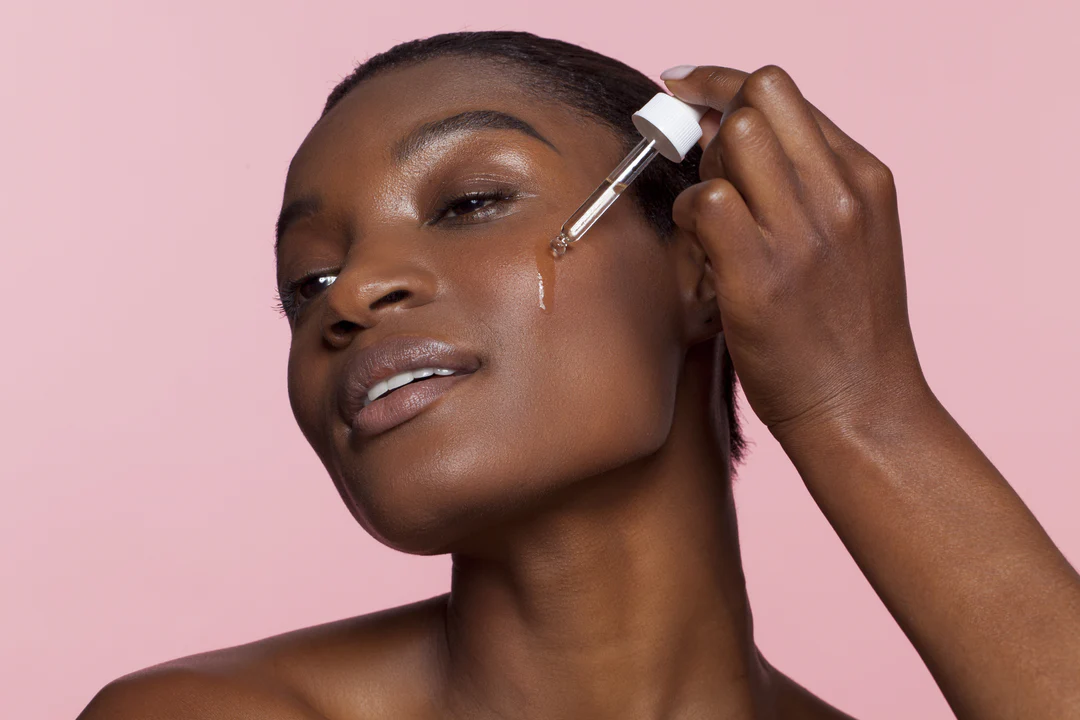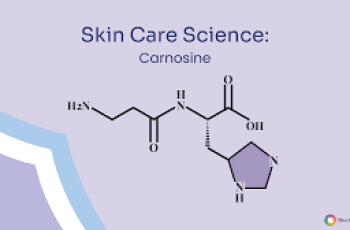Do Azelaic Acid and BHAs Mix?
There is a ton of research supporting the benefits of azelaic acid and its effects on the skin. While it is still one of the lesser-known acids, it has surged in popularity in recent years and many of us have realized that this powerful ingredient is what we are missing from our daily skincare routines.
On the other hand, BHAs, especially salicylic acid, have become a key ingredient in the fight against problem skin. It is well known for its efficacy and effectiveness in fighting pimples, blemishes, and acne. This comes with some side effects such as dry skin, itching, and mild irritation.
If you are a little confused about these ingredients and don’t know if they are suitable for your daily routine, here is a quick summary.
What are the benefits of azelaic acid?
Derived from grains such as barley, wheat and rye
Helps unclog pores of excess sebum, bacteria, dirt, debris and surface impurities
Evens skin tone and reduces the appearance of dark spots, sun damage, acne scars and melasma
Removes dead skin cells that build up on the surface of the skin for a younger, smoother-looking complexion
If you want to learn more about azelaic acid and its effects on the skin, read our dedicated blog post.
What are the benefits of BHAs?
The most commonly used BHA, salicylic acid, is extracted from willow bark.
It is typically oil-soluble and can penetrate deep into pores to remove built-up dirt.
Exfoliates the outer surface of the skin to remove dead skin cells and debris.
Reduces inflammation, such as breakouts and blemishes.
For more information on BHAs, check out our blog on the benefits of AHAs and BHAs for the skin.
Now that you have a brief look at these ingredients, let’s see if we can mix them.
Can BHAs and Azelaic Acid be used together?
Yes, it is considered safe to use BHA and Azelaic Acid together. To avoid unwanted skin reactions, it is best not to layer them together. The combination of these powerful ingredients is a perfect combo to combat various skin concerns such as breakouts, spots, uneven skin tone, signs of aging, and dull complexion. Try to apply the ingredients in such a way that there is enough time between applications, e.g. 30 minutes, for the pH levels of the skin to rebalance and stabilize. Mixing these ingredients can lead to irritation, increased sensitivity, rashes, and redness.
We have a dedicated blog post on how to use Azelaic Acid and BHA together, so check it out for more information.
What should not be mixed with BHA?
There are some ingredients that should not be mixed with BHA, such as: B, Salicylic Acid.
Do not mix with AHAs – Using too many acids can cause the skin to over-exfoliate, often stripping it of important sebum. When the skin barrier lacks proper sebum levels, it can lead to overproduction of sebum, which can lead to more breakouts, spots, and acne.
Do not mix with Retinol – Both ingredients are very potent and should not be used together as this can lead to severe side effects and skin irritation.
Do not mix niacinamide with AHAs and BHAs because different pH levels can cause redness, for example, niacinamide has a pH of 5-7. This can cause the acids to not work effectively and not do their job.
Can Azelaic Acid and Salicylic Acid be Mixed?
No, you should not mix azelaic acid and salicylic acid because this increases the chances of skin irritation. This is because azelaic acid works on the outer layer of the skin, while salicylic acid can penetrate deeper into the skin. This can cause too much irritation on the face, leading to itching, redness, sun sensitivity, and general discomfort.
If you want to use azelaic acid and salicylic acid in your daily skincare routine, it is best to apply them alternately to the skin. You can use each active ingredient in your evening routine, or you can use azelaic acid in the morning and salicylic acid in the evening. Just apply at least SPF 30 every day to protect your skin from UV damage.
Is Azelaic Acid an AHA or BHA?
Surprisingly, she is neither an AHA nor a BHA. It occurs naturally in the skin and is derived from grains such as wheat, rye, and barley. This form of yeast is used in many skin care products. Azelaic acid has similar effects and benefits for the skin, removing dead skin cells, clearing impurities from the complexion, and improving the complexion overall.
Where is Azelaic Acid Used in Daily Life?
If your skin has developed a tolerance to azelaic acid, there are a few azelaic acid-rich products you can use in your daily life. The most popular formulas are cleansers and exfoliating toners. These products are best for first introducing azelaic acid into your routine because they rinse away from the skin, preventing over-irritation. Using a serum with hyaluronic acid after a cleanser or toner can combat dryness and lock moisture into the skin, keeping it hydrated and comfortable.
Can I use azelaic acid on wet skin?
This isn’t the case, as the levels of azelaic acid used in formulas like serums and creams are usually prescription-only, and applying it to damp skin can actually cause skin irritation.
Here’s more about mixing azelaic acid and BHA. If you have more questions about using these powerful powers together, follow us on Instagram. You can reach one of our skin care experts via direct message.
DQH Knowledge drop: In your 20s, your skin cell turnover decreases. (Cell turnover is a key component in keeping your skin youthful.) You know what else slows down? Your collagen production. Starting in your 20s, collagen decreases by about 1 percent per year. Should you want to prevent fine lines and wrinkles, start by eliminating behaviors that contribute to premature aging. “If it’s bad for you, it’s bad for your skin,” says dermatologist Michel Somenek.
“Cigarette smoking reduces blood flow to the skin and causes premature wrinkling and a dull skin texture. Making the repeated pursed motion to inhale can also cause smoker’s lines. Alcohol and recreational drugs are toxins for the skin that damage its cellular structure and DNA,” Somenek tells us. “The faster you eliminate vices while you are young, the better chance your skin and body have to recuperate.” Also, adopting an anti-aging routine in your 20s is key. After all, the best offense is a good defense. We spoke to Somenek and experts Joshua Ross and Audrey Kunin to find out more.
Keep reading for the best anti-aging products for your 20s, according to skincare professionals.
Sunscreen
“We all know that the sun is the number one cause of skin aging and starting the prevention in your 20s is very important,” Ross says. “The majority of your sun damage won’t start to appear until you’re in your 30s, so don’t wait until you see it surface or you’ll be behind the curve. Stay ahead of it with a good-quality zinc-based sunscreen worn daily.”
Farmacy Green Defense Daily Mineral Sunscreen
An invisible sunscreen with SPF 30, plus botanical extracts meant to protect skin with tons of antioxidants. Bonus: It’s clean and fine to use under makeup.
Bareminerals Complexion Rescue™ Tinted Moisturizer Broad Spectrum SPF 30
Although we recommend you use your SPF and moisturizer separately, we also understand moments when you don’t have time or energy for that extra step. For those times, this bareMinerals moisturizer is a great thing to have on hand.
Vitamin C Serum
“A great introduction to anti-aging is to start with a vitamin C serum in your morning skincare routine,” Ross says. “It’s a powerful antioxidant that will neutralize free radicals and brighten the skin.” He adds that it’s a great way to counteract the effects of the sun’s harmful rays, which, as previously mentioned, are among the biggest causes of premature aging.
Drunk Elephant C-Firma™ Vitamin C Day Serum
The Drunk Elephant C-Firma is a lightweight serum that promises to give skin a glow by combining the brightening powers of vitamin C with ferulic acid, l-ascorbic acid, and vitamin E. The included sodium hyaluronate is meant to replace hydration loss, so you shouldn’t have to deal with any irritation.
Sunday Riley C.E.O. Rapid Flash Brightening Serum
This potent serum is jam-packed with vitamin C (15 percent, to be exact), which means it’s a potential superstar at both brightening skin and dousing it in antioxidants.
Peptides
Using peptides on your skin has many benefits, says Somenek. “The skin barrier is what defends the body against pollution, UV rays, bacteria, and toxins. It can be damaged by several everyday factors. Using topical peptides aids in building a stronger barrier,” he says. “Peptides comprise elastic fibers, which are a type of protein. These fibers help to make skin appear taut and firm. Peptides can also help repair damaged skin, relieve inflammation, and even out skin tone. Some peptides can kill acne-causing bacteria that is common in 20-somethings.”
Kunin agrees, saying, “Peptides are an excellent entry point for supporting collagen.” She recommends looking for face and eye treatments that contain these collagen-boosting powerhouses.
Charlotte Tilbury Magic Eye Rescue Cream
This Charlotte Tilbury super-emollient eye cream has a base of coconut oil and shea butter (read: it’s incredibly hydrating). Botanicals plus peptides are meant to help reduce dark circles and boost collagen, respectively.
This creamy moisturizer serves up potent collagen-boosting peptides and pycnogenol, and antioxidant-rich vitamin C. “Instead of sitting on top of the skin, peptides penetrate the outer layer so they go deep. The ‘signals’ they send tell the cells to produce elastin and collagen, which are needed for youthful-looking skin,” explains Somenek.
At-Home Peel Pads
Remember that skin cell turnover fiasco we talked about earlier? One way to help support it is by exfoliating. “Exfoliation is important to help keep skin fresh and luminous,” Kunin says. She recommends using at-home peel pads as an easy and effective way to exfoliate.
“The goal in your 20s is to fight the slowing pace of cell turnover. It is wise to use products that gently exfoliate, yet still remove oil and other impurities. Products that have Alpha Hydroxy Acids (AHA) or Beta Hydroxy Acids (BHA) are a good choice.”
According to Somenek, you should only exfoliate two to three times a week. “People of all ages are guilty of over-exfoliating and that can be too much of a good thing,” he says.
Dermadoctor Kakadu C Intensive Vitamin C Peel Pad
A few swipes of this Derma Doctor powerful peel pad promise to leave your skin glowing and smooth, thanks to the seven (yes, seven) types of chemical exfoliants, including AHA and BHA. It also contains vitamin C via Kakadu plum extract for added brightening and antioxidant protection.
KEY INGREDIENTS Kakadu plum extract is sourced from the Kakadu plum, a fruit grown in northern Australia. It contains vitamin C, which restores the skin’s natural barrier, increases collagen production, and soothes irritation.
Dr. Dennis Gross Skincare Alpha Beta® Universal Daily Peel Pads
These are the gold standard of peel pads, with a cult following and over 900 five-star reviews on Sephora. They’re easy to use and contain a blend of anti-aging exfoliating acids.
Emollient Night Cream
“In your 20s, you need to start upping the hydration in your skincare routine. You may have been cautious of over-moisturizing because of acne in your teens, but as you enter your 20s, your skin transitions and becomes drier,” Ross says. “I recommend an emollient night cream added into your evening skincare regimen.”
“Twenty-somethings need to make sure that they are not using creams that will clog their pores and cause excess oil production,” says Somenek. Opt for non-comedogenic products.
Cerave Skin Renewing Night Cream
One great choice is the CeraVe Skin Renewing Night Cream, which is a non-comedogenic night cream that leaves skin soft and glowy. It combines the moisturizing powers of ceramides and hyaluronic acid.
RoC Retinol Correxion Max Hydration Creme
“The best night cream ingredients contain retinol, benzoyl peroxide, and/or salicylic acid or hyaluronic acid. The goal is to moisturize, yet remove excess oil,” says Somenek. This Roc Retinol Correxion cream fits the bill as it contains both hyaluronic acid and retinol so it promises to moisturize while also being non-comedogenic.



